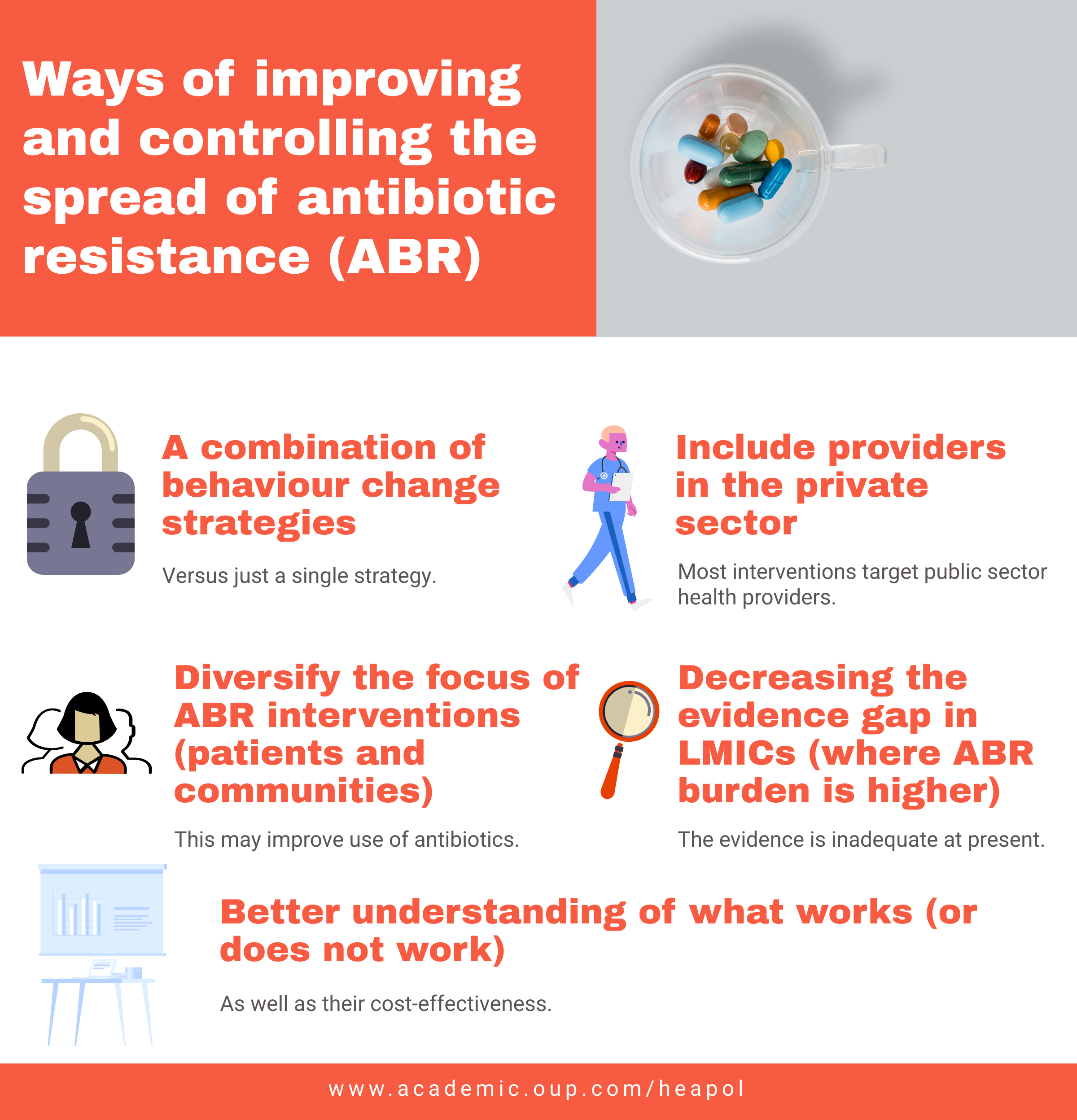By Carla Cuevas (University College London), Neha Batura (University College London), Luh Putu Lila Wulandari (University of New South Wales and Udayana University), Mishal Khan (London School of Hygiene & Tropical Medicine and Aga Khan University) and Virginia Wiseman (University of New South Wales and London School of Hygiene & Tropical Medicine)
Since their first use, antibiotics have played a key role in preventing and treating bacterial infections. They have saved patients’ lives, and extended life spans, worldwide. However, the overuse and misuse of antibiotics has led to the evolution of bacteria strains that are resistant to antibiotics. Thus, several infections, for example, pneumonia, tuberculosis, blood, and foodborne diseases have become harder to treat as antibiotics are becoming less effective. The prevalence and spread of antibiotic resistance (ABR) is made worse when antibiotics can be bought for animal or human consumption without a prescription . This, in combination with over-prescription of antibiotics in the absence of standard treatment guidelines has exacerbated ABR. If not contained, the spread of ABR will increase the burden on patients who suffer from prolonged illnesses as well as on their families and on global health systems.
A wide variety of interventions to improve the use of antibiotics have been implemented, largely in high-income settings, with mixed results. As an interdisciplary team, whose research experience is grounded in health systems in low- and middle-income countries (LMICs), we noted a gap in the evidence for these settings. This inspired us to explore how the behaviour of health care providers and patients could be changed in order to improve the use of antibiotics and counter the spread of antibiotic resistance in an article published in Health Policy and Planning.
There are a few points that are important to highlight about our research that could give us some new information about ways of improving and controlling the spread of ABR:
- A combination of behaviour change strategies is likely to be more effective than a single strategy
We found that interventions incorporating educational activities, training programmes, supportive feedback and supervison loops, and guideline development and enforcement were more likely to positively affect provider behaviour. However, interventions consisting of multiple strategies, for example, training programmes combined with educational activities or guideline adherence were more effective than training programmes alone. This is likely because the motivation, skills, knowledge, tools and experiences delivered by educational activities can strengthen the impact of a training Thus, policies that focus on one strategy alone may be less effective in improving the use of antibiotics.
- Excluding providers in the private sector may hamper efforts to improve the use of antibiotics
Most interventions targeted public sector health providers, particularly doctors but only a handful of interventions targeted other health providers who are also able to prescribe or dispense antibiotics, such as nurses, community health workers, and pharmacy workers. It is important to expand efforts to include these groups, who are often the first point of careseeking contact in LMICs. This is particularly important in settings where antibiotics (and other medicines) can be bought over-the-counter without a prescription, and used without adequate information about correct dosage, and length of treatment.
- Patients and communities also have a key role to play in improved antibiotic use
A small number of interventions were targeted at patients and communities. Patient behaviour such as using antibtioics for long periods of time, not adhering to recommended treatment and dosing schedules, stock piling left over antibiotics at home for later use, and using antibiotics to treat uncomplicated viral infections can lead to an increase in ABR. Designing interventions to deliver information about the appropriate use of antibiotics for different illnesses, and complementary social marketing campaigns could improve the use of antibiotics amongst this very important population.
- Low- and middle-income countries have an important role to play in global strategies to combat ABR but there is a paucity of information in these settings
ABR is growing at an accelerating pace in LMICs, and several countries have been tasked to develop and implement nationwide strategies to curb ABR. Our research found that there is limited evidence on how antibiotics are used, patterns of ABR amongst the population, and how these change over time in LMICs. Without such evidence, it is challenging to develop and implement effective regulatory, economic or legislative policies to improve antibiotic use.
5. Urgently need to understand why interventions work (or do not) and their cost-effectiveness
Our research found that most of the intervention evaluations did not unpack why an intervention strategy worked (or did not). Further, only a handful of evaluations explored value for money or affordability dimensions of interventions. The lack of such evidence could pose a challenge to decision makers and thus, limit to uptake and scale-up of behaviour change strategies to improve the use of antibtioics.

Conclusion
Tackling ABR is a complex process involving us all – as individuals, health professionals and members of society. Our review found that antibiotic use by health care providers could be most effectively improved by using multiple behaviour change strategies in combination, such as on education, restriction and training. It also highlighted lay people and private healthcare providers, who are major users of antibtiotics are not as strongly focussed on as public healthcare providers, in LMICs. Looking ahead, decision-makers investing in controlling ABR would benefit from evidence on the groups that are currently poorly studied, and on which interventions are cost-effective and affordable.
Access the Paper











